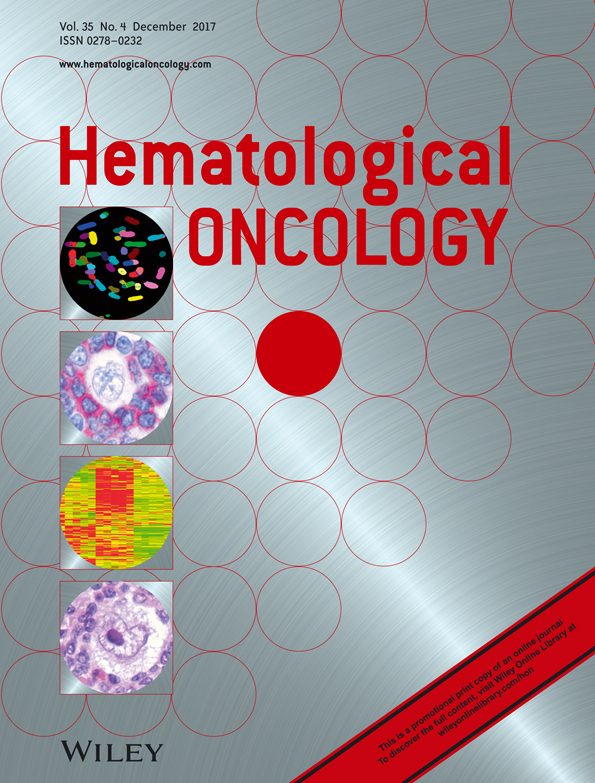Mean platelet volume as a predictive marker for venous thromboembolism and mortality in patients treated for diffuse large B-cell lymphoma
Abstract
It has been suggested that mean platelet volume (MPV) is associated with the risk of venous thromboembolism (VTE) and increased mortality in patients with cancer.
We evaluated the association of MPV with VTE and mortality in patients treated for diffuse large B-cell lymphoma (DLBCL). Retrospective analyses were performed on 184 adult patients (median age 59, 55% men), of whom 141 were newly diagnosed, and 43 had relapse/refractory DLBCL.
During the observation period (median 499 days), 39 (21.2%) patients developed VTE. Thirty-nine patients died of various causes. In univariate analysis, only the MPV and the treatment line were associated with the occurrence of VTE. In multivariate analysis, MPV ≤10th percentile (odd ratio 1.81; 95% confidence interval 1.06–3.11, p = 0.03) and salvage therapy (odd ratio 2.46; 95% confidence interval 1.66–3.65, p < 0.001) remained significant factors for developing VTE. Other patient-related factors—age, gender, disease-related factors—stage, the International Prognostic Index score, DLBCL subclassification (the germinal centre type and the activated B-cell type), Ki-67 index and VTE risk assessment model failed to be prognostic for VTE.
In a Kaplan–Meier analysis, patients with MPV >10th percentile had statistically significantly longer VTE-free survival than patients with lower MPV. In multivariable Cox regression analysis, MPV ≤10th percentile (hazard ratio 5.56, p < 0.001), male gender, age, Ki-67 index, high or high-intermediate International Prognostic Index and VTE development (hazard ratio 7.81, p = 0.029) all significantly correlated with the risk of mortality. The probability of survival was higher in patients with MPV >10th percentile.
In conclusion, our results suggest that the pre-chemotherapy MPV value is a cheap and available parameter that may be a useful prognostic marker for a significant risk of VTE and inferior survival rates in patients with DLBCL.




